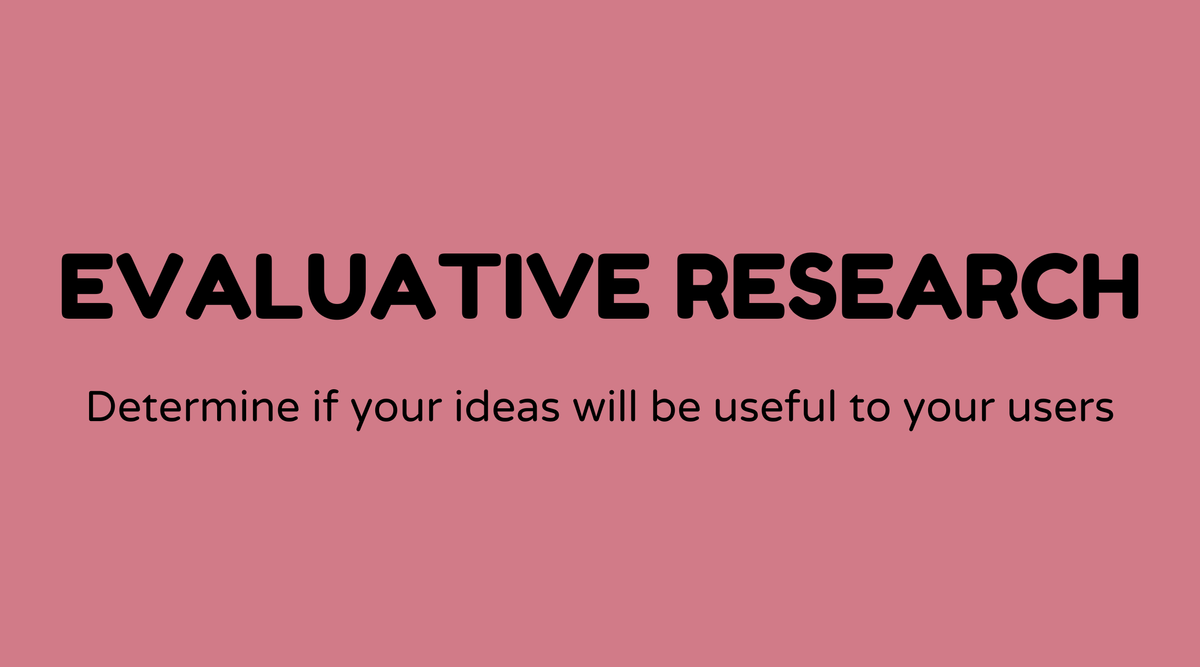Evaluative research

Overview of Evaluative Research:
Evaluative research serves as a means to gain a deeper understanding of how effectively a project, product, or service performs. It plays a vital role in measuring effectiveness, quality, and outcomes. This type of research is commonly implemented in fields such as education, healthcare, and marketing. Think of it as a tool that assists stakeholders in refining and optimizing their offerings for greater impact.
Why Evaluative Research Matters:
What is the significance of evaluative research? First and foremost, it eliminates uncertainty. By replacing intuition with solid evidence, organizations can make informed choices, ensuring alignment with user needs. This approach also identifies effective and ineffective elements, assisting in future enhancements and ensuring accountability in resource usage.
What is Evaluative Research:
So, what does evaluative research entail? It is a method that involves systematically collecting and analyzing information to assess the value, effectiveness, and impact of an item or activity. This method can utilize various research designs, such as quantitative, qualitative, or mixed approaches. The findings often result in formal reports or presentations, complete with informative graphs, charts, and metrics. In essence, evaluative research narrates the success—or lack thereof—of a project.
How to Conduct Evaluative Research:
Interested in conducting evaluative research? Here’s a straightforward guide. Begin by defining clear objectives. What do you wish to evaluate? Next, select your research design—experiment, survey, case study, or a combination. Collect data attentively, whether through interviews, surveys, or observations. Analyze the data to extract meaningful conclusions, using statistical tools if necessary. Finally, compile a report with recommendations. Engaging with stakeholders throughout the process can enhance the quality of the research.
- Step 1: Define your research questions and objectives.
- Step 2: Choose the most suitable evaluation method.
- Step 3: Create your data collection tools.
- Step 4: Collect data through chosen methods with accuracy.
- Step 5: Analyze the data using statistical or thematic approaches.
- Step 6: Present your findings along with actionable suggestions.
Examples of Evaluative Research:
Let’s examine some practical instances of evaluative research. In education, this research might evaluate the effects of a new teaching method on student performance. In marketing, it could assess customer satisfaction with a product line through surveys or focus groups. Organizations such as the World Health Organization often rely on evaluative research to monitor the effectiveness of health interventions.
FAQs:
How does evaluative research differ from other research types?
Evaluative research specifically targets the assessment of value or impact, while other research types may investigate new concepts without measuring existing effectiveness.
What are common methods used in evaluative research?
Typical methods include surveys, interviews, case studies, and quantitative or reasoned analysis.
Who typically uses evaluative research?
Entities in education, healthcare, marketing, and governmental bodies utilize evaluative research to enhance programs and policies.
What is the main purpose of evaluative research?
The primary aim is to ascertain effectiveness and identify areas for improvement, providing evidence-based insights for enhancements.
How long does a typical evaluative research project take?
Duration varies by the scope of the research; smaller projects can span weeks, while larger evaluations might extend over several months or years.
Can evaluative research methods be combined?
Certainly, integrating qualitative and quantitative methods often yields the most comprehensive results, providing both statistical and contextual insights.



